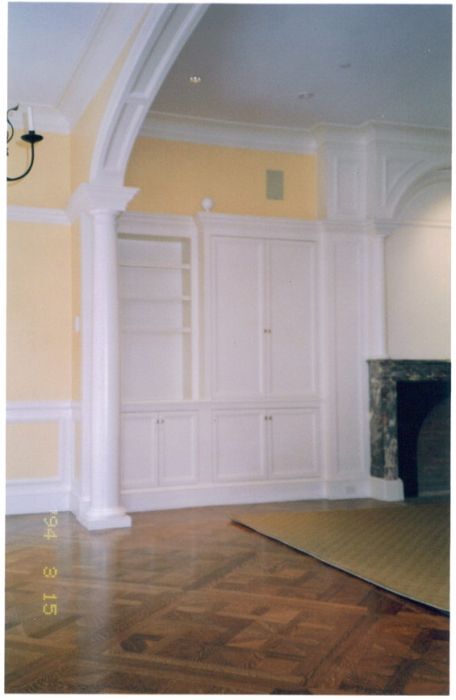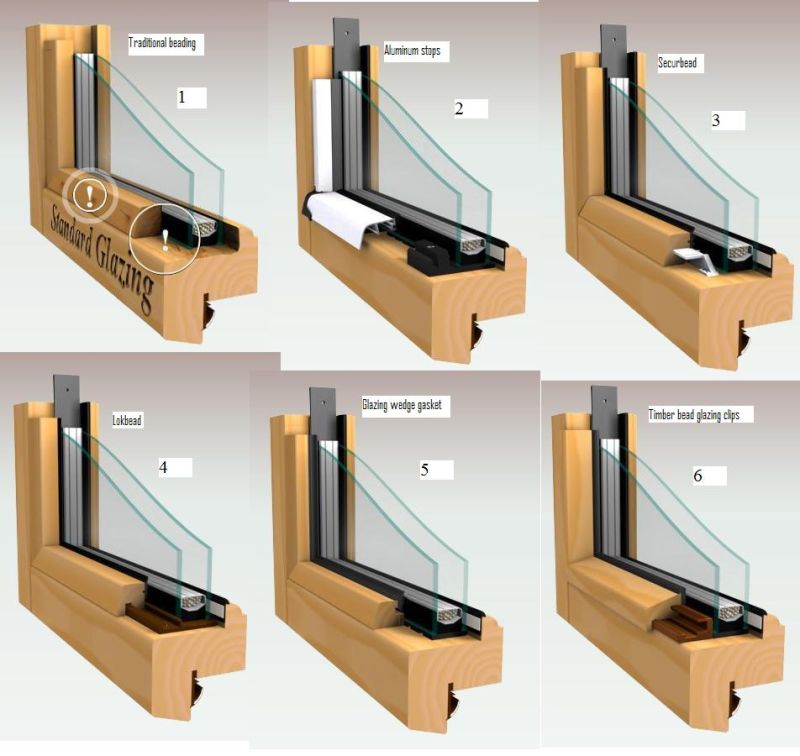Fabricating an Elliptical Arch
What's involved in creating an elliptical archway trim package? June 23, 2006
Question
Can someone help me with construction methods to build an elliptical jamb with inverted panel molding, as per the photo? I do not have CNC equipment and the material is stained mahogany.

Click here for full size image
Forum Responses
(Architectural Woodworking Forum)
From contributor K:
That curve is a little tricky when you are using real woods. I would probably get some flexible plywood and then veneer it with the mahogany. Cut the squares out where you want them and then route out 1/4" rabbet around the square on the back side. This will accommodate a 1/4" mahogany panel and make it flush to the back. Then I would put a panel moulding around the square on the front to cover the exposed plywood. That should give you the flat face of the arch. Because the arch is so steep, I would probably use some sort of flex moulding as the casing, especially if the color of stain is on the darker side. You can get flex moulding from Pearlworks. If you want to use solid stock for the casing, you will have to glue up some wide stock and then cut your curve. Then use a moulder that can mould curves. You can always make a template and special order the casing if you have the bucks.
From contributor M:
One thing I have done before is rip my curved rails down into slats that I can bend, then stack them as if I were going to laminate them together. You have to build a jig to hold them together flat. Then you would run them through the shaper (or router). Next you can bend them to your shape and glue them together, but the trick is to make them look flush, even and consistent. It isn't quick or easy.
From contributor L:
I'd have a millwork shop do them that is equipped for the work. If you really want to spend the time, make a form, rip the strips from solid, keeping them in order, put them through the widebelt to clean up the saw kerf. Make second half of the form that is slightly flexible and clamp the glue-up between the forms. After it's dry, run the stack back through the widebelt to flush and bring to final size. If you have access to an arch molder shaper, you're set. Otherwise you can make a set of cradles and run it through your shaper with a power feed (remove some of the wheels to just feed with the end wheel). It's probably cheaper to have someone else do it, though, if you lack the equipment. We make 5 or 6 curved moldings a day, but have lots of equipment. Even though we are fairly well equipped, it still takes considerable time.
From contributor D:
There are a number of ways to fake the construction to get the look, but the real thing is done with form bent laminations, and cope and stick frame and panel. You need to be able to do "stand up" profiling on a shaper and perhaps even curved copes. If panels are to be raised, there are a few more tricks to those. These things have been done for centuries, before CNC, to showcase craftsmanship. We have done quite a few of these over the years.

